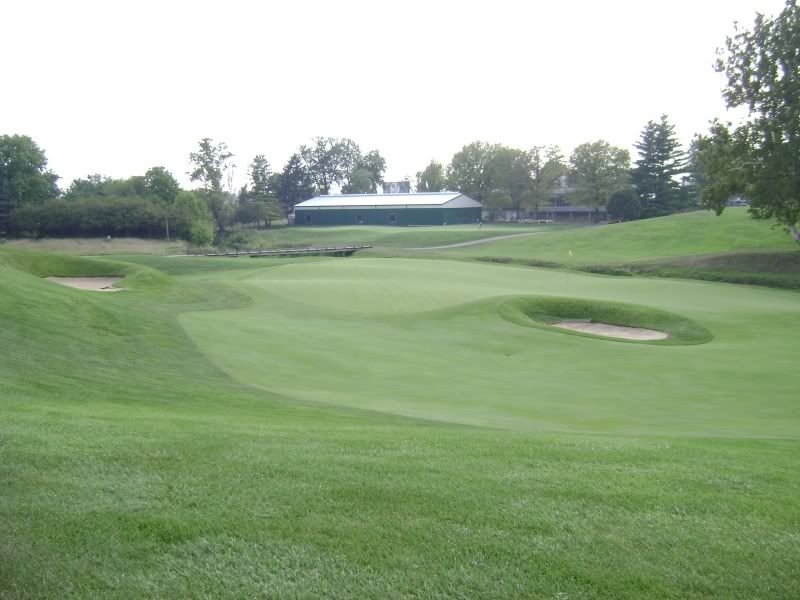Holes of note:
Hole 3 – 365 yards - The third winds itself around some of the best terrain to be found in 365 yards with a hill on the left side of the hole. The fairway winds around this and leaves a blind shot into a wonderful green for anyone except those that go along the extreme right side. The green is perhaps the most contoured on the course and provides some wonderful putts, but blind seconds into the green often end up running long and into the chipping area beyond the green. Perhaps my favorite on the course.
Tee shot
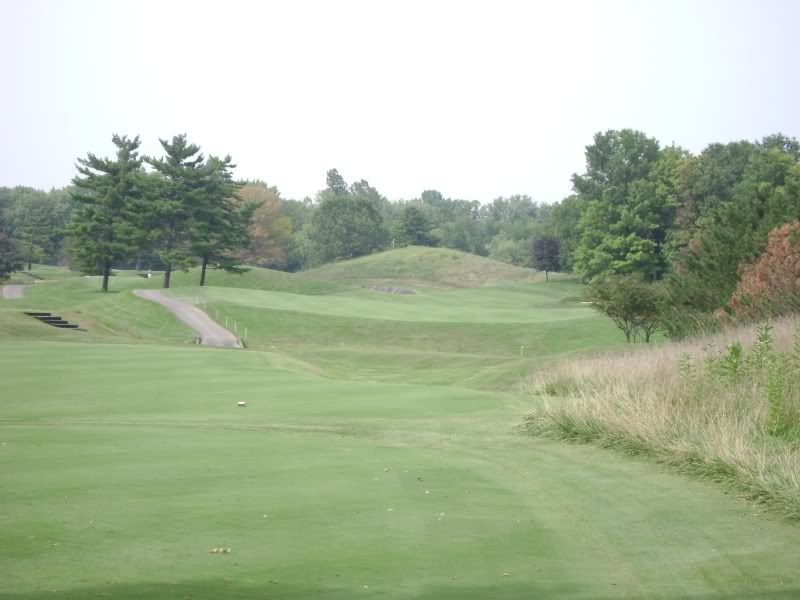
View from on top of hole

View from behind showing the flow of the hole around the hill
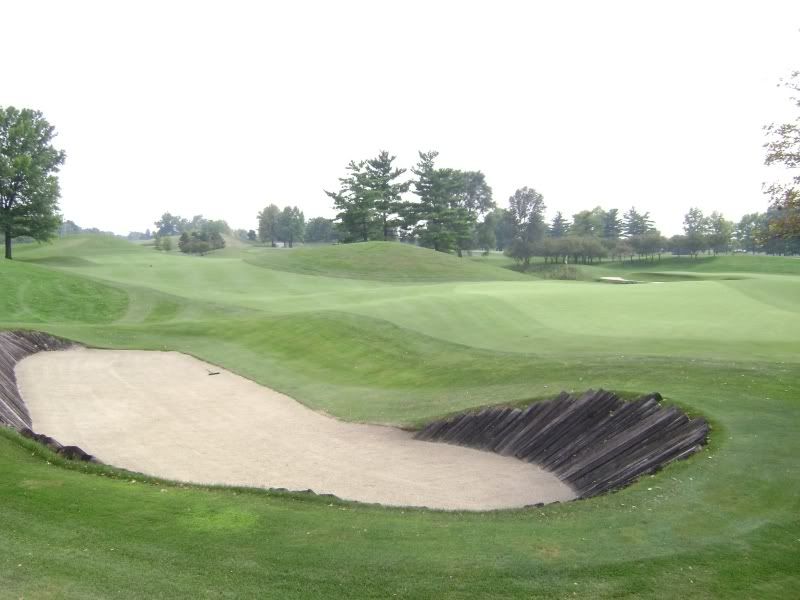
Hole 4 – 206 yards - The fourth is a beautiful setting that is protected on the inside by the creek and a stone wall, as well as a bunker. Of the short holes, the fourth is the superior hole from tee to green in beauty, challenge and design.

Hole 7 – 190 yards – The first hole inside the track and what is often considered Holy Ground for Hoosiers. An imposing hole that looks much longer than its yardage. Features a 50 yard long green that is split by a ridge. Though not a true Redan, it does share some characteristics. The hole drops off in all directions from the green. I don’t know if I would call it a great hole, but it is definitely worth some conversation.
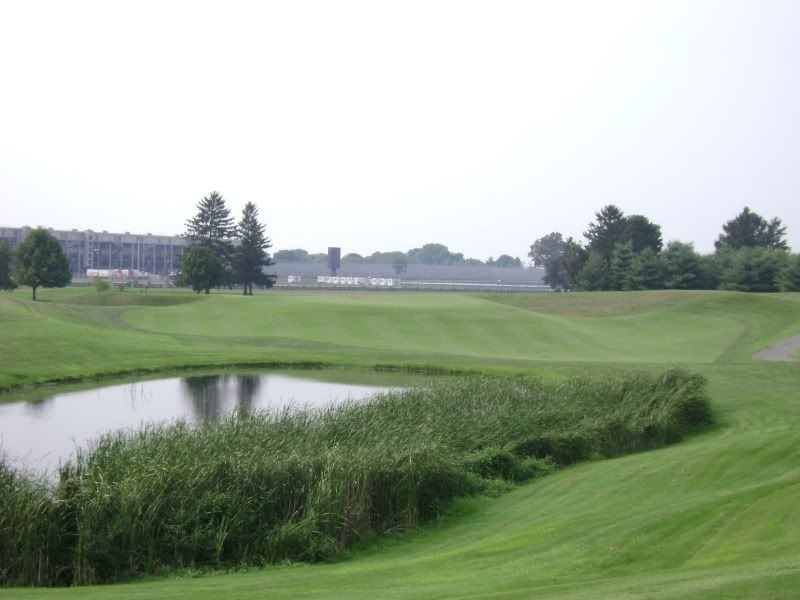
Hole 8 – 448 yards – A solid strategic hole that is great on the green end as it curves around the water on the left.
From behind the green. Note the little tongue that goes toward the hazard on the front right when viewed from the fairway.

Hole 10 – 346 yards - The tenth features a wave like motion in the terrain that leads up to the green complex and another excellent green by Dye. The pot bunker in the back of the hole creates some trepidation on delicate pitch shots that run down the length of the putting surface.
From behind the hole
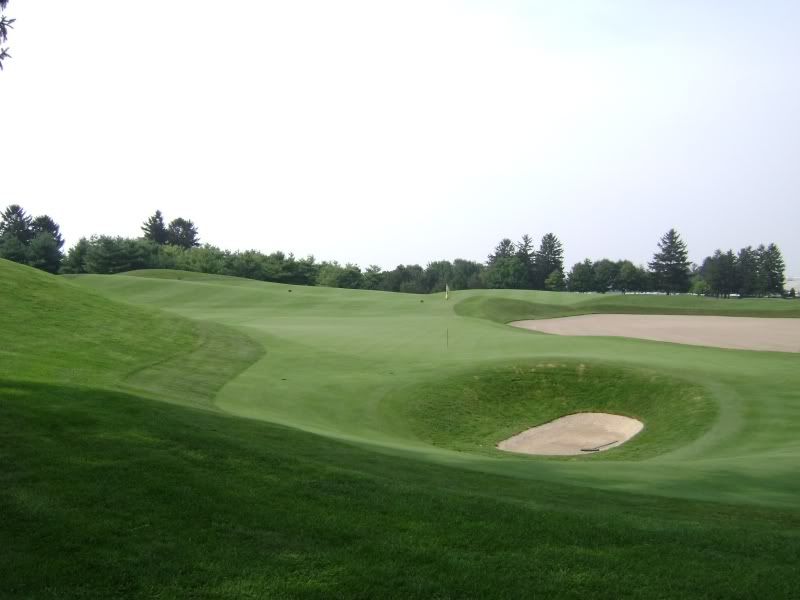
Hole 13 – 192 yards - The thirteenth features an E-shaped hazard and a deep pot with a railroad tie for the back face of the bunker. This might be the scariest par three when all is said and done. Start of the strong finish.
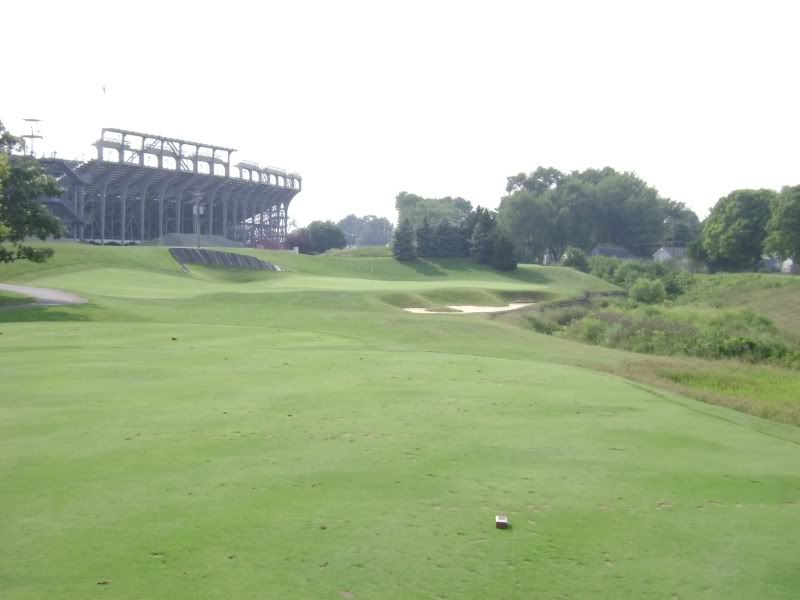
Hole 14 – 311 yards - The fourteenth features a deep pot bunker in the middle of the fairway in a clear allusion to the links courses of Scotland and another difficult green complex for the player that cannot control their wedge game.
The tee shot
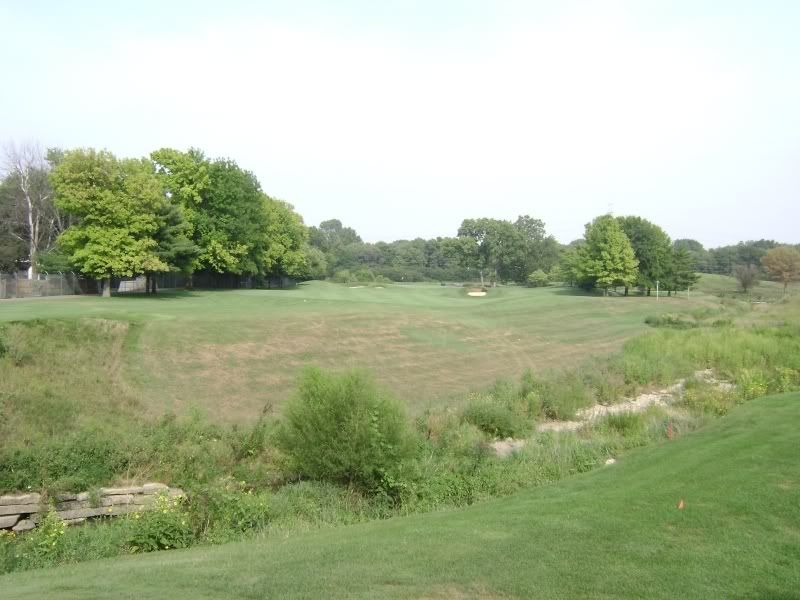
The pot bunker in the middle of the fairway
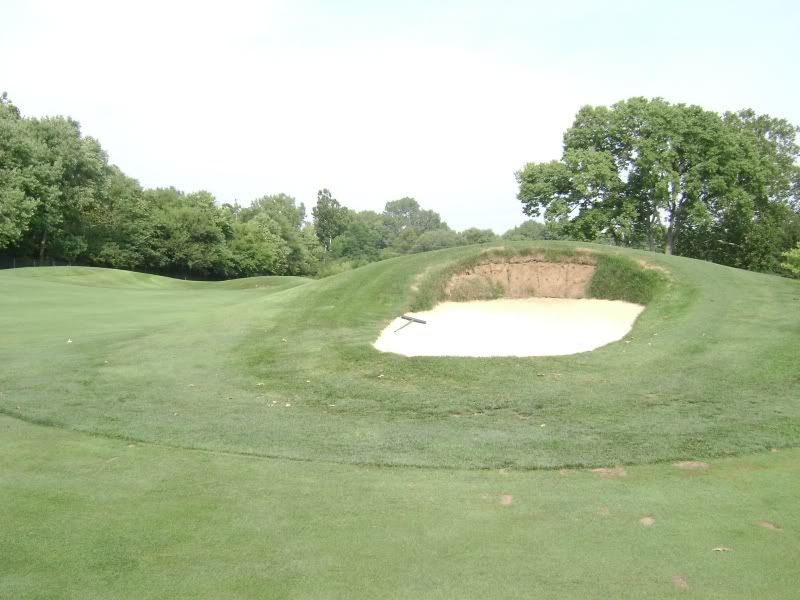
Hole 15 – 545 yards - With the electric tower being the aiming point for the sloped fairway, the player can either be left with a perfect lie to set up an ideal approach or be stuck behind the piece of Americana for a difficult second. Perhaps the best par five out of a lackluster group.
The approach
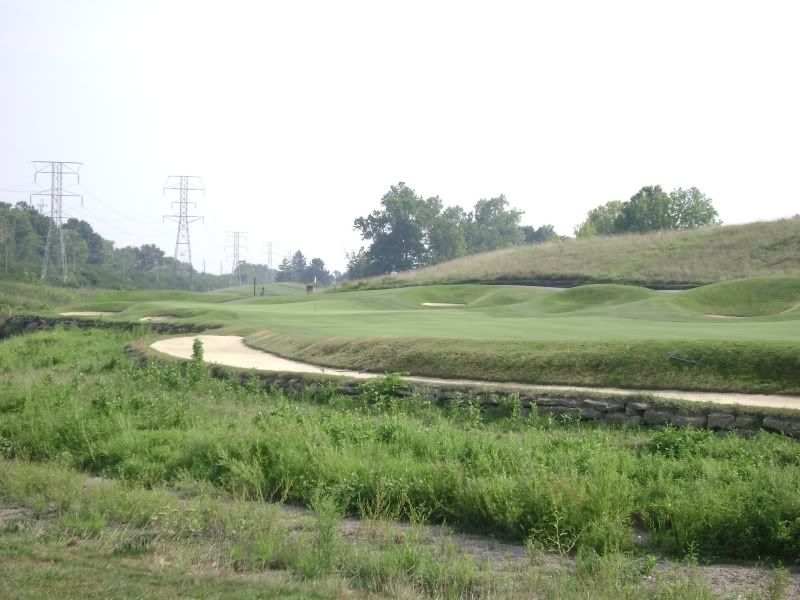
Hole 17 – 204 yards - The seventeenth is similar to the fourth but running in the opposite direction, from left to right.
The
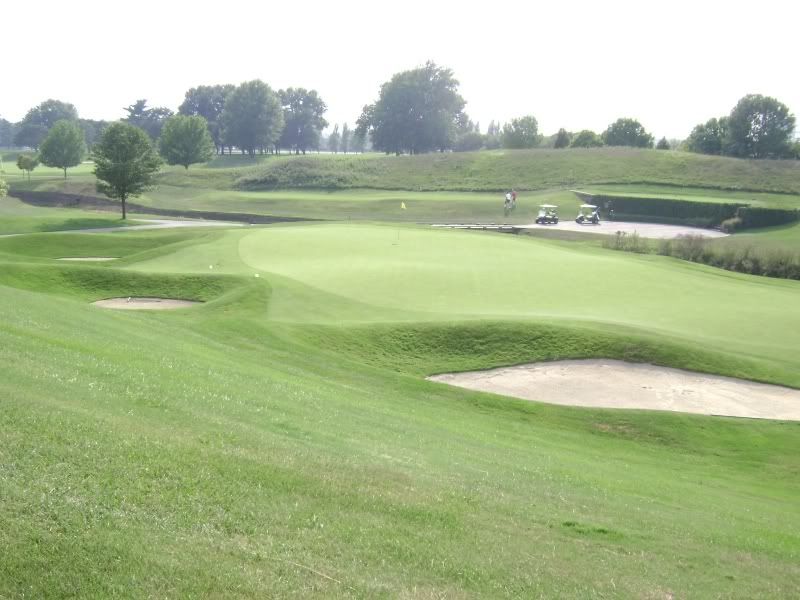
green from the hill on the left
Hole 18 – 457 yards - The final hole is the class of the longer par fours as a group as the creek runs along the right side all the way up the hole. The fairway slopes from left to right to create a typical Dye finishing hole with a pot bunker protecting the center line into the green.
From the tee. Note the 30 foot hill on the left.
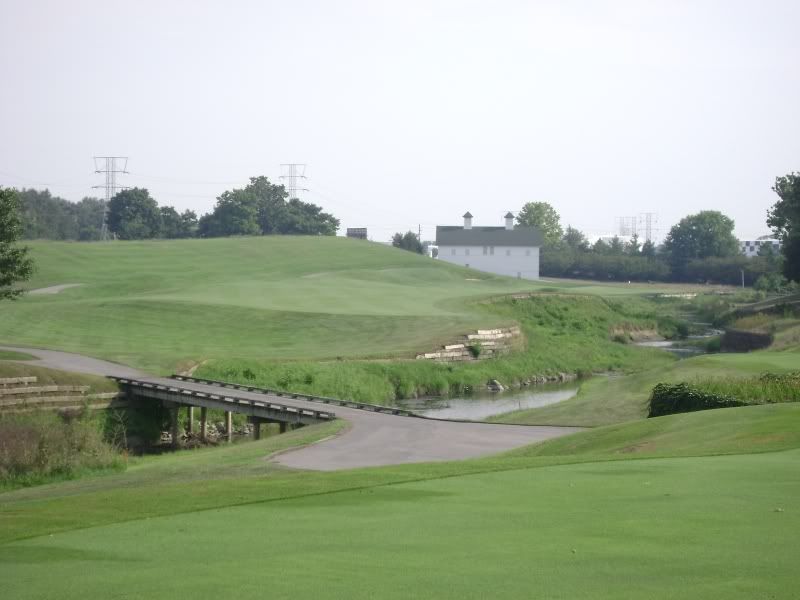
The green
